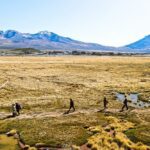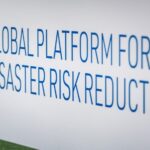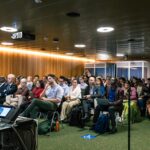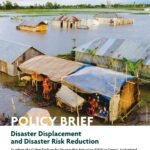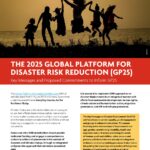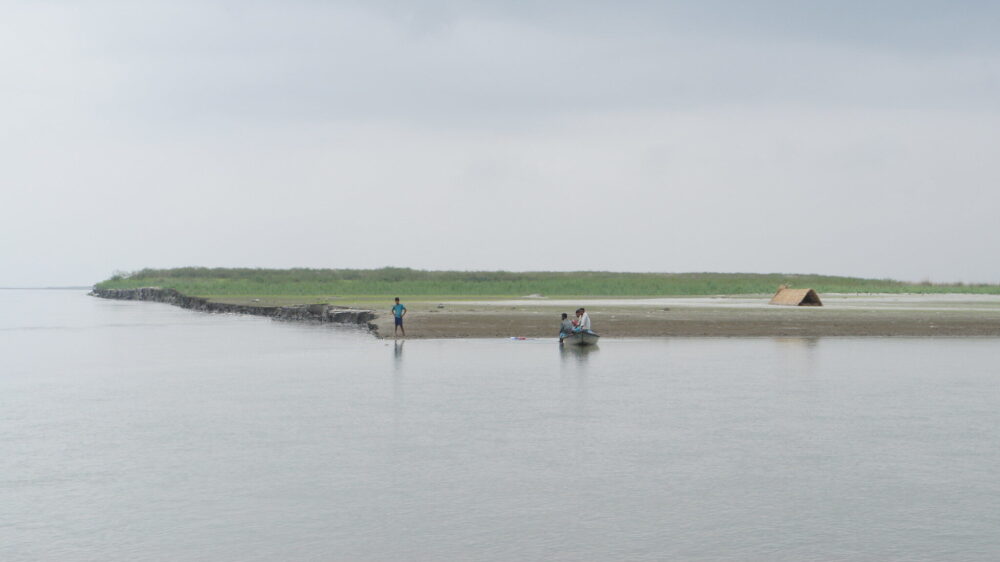Reporting back – Displacement in Disasters- Participation and Innovation for Resilience | Side Event at GP25
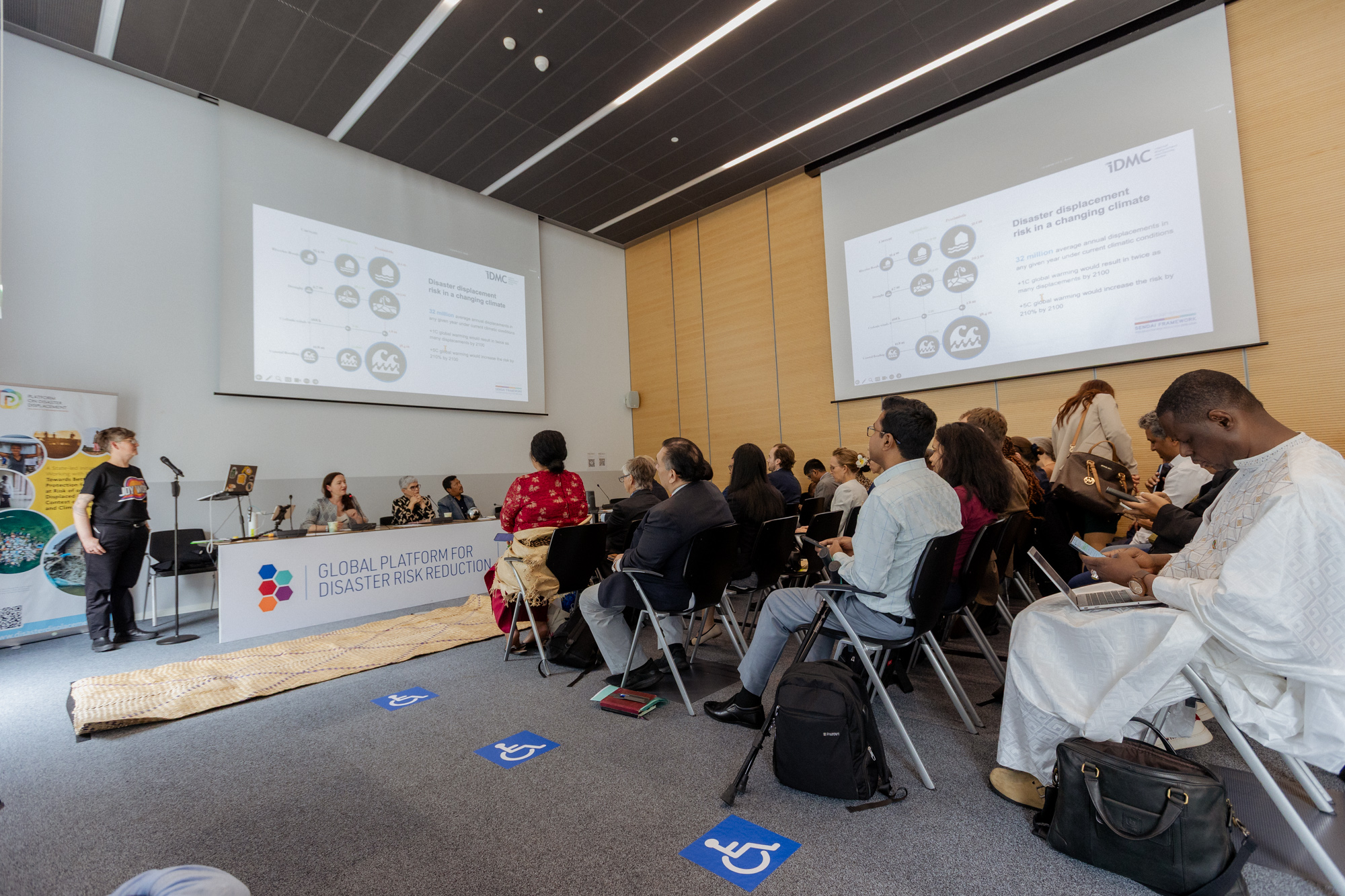
4 June 2025, Geneva, Switzerland – On the occasion of the 2025 Global Platform for Disaster Risk Reduction (GP25), a multistakeholder hybrid event was organized on 4 June in Geneva by the Platform on Disaster Displacement, the International Organization for Migration, CARITAS Internationalis, the Government of the Philippines, the Internal Displacement Monitoring Centre, Pacific WIN – Pacific Women’s Indigenous Network and the Caribbean Disaster Emergency Management Agency.
This side event was designed to showcase comprehensive approaches to disaster displacement through multistakeholder collaboration with non-traditional partners including artists, representatives of groups of migrants and displaced persons active on disaster risk reduction (DRR) to foster a deeper and more nuanced understanding of the human impacts of disasters, with particular attention to the rights of people and groups in vulnerable situations.
The event was facilitated in a creative format by Dr. Jen Rae, Co-founder and Creative Research Lead at the Centre for Reworlding.
The first segment featured disaster displacement stories presented by representatives from Caritas Bangladesh and Caritas Chile.
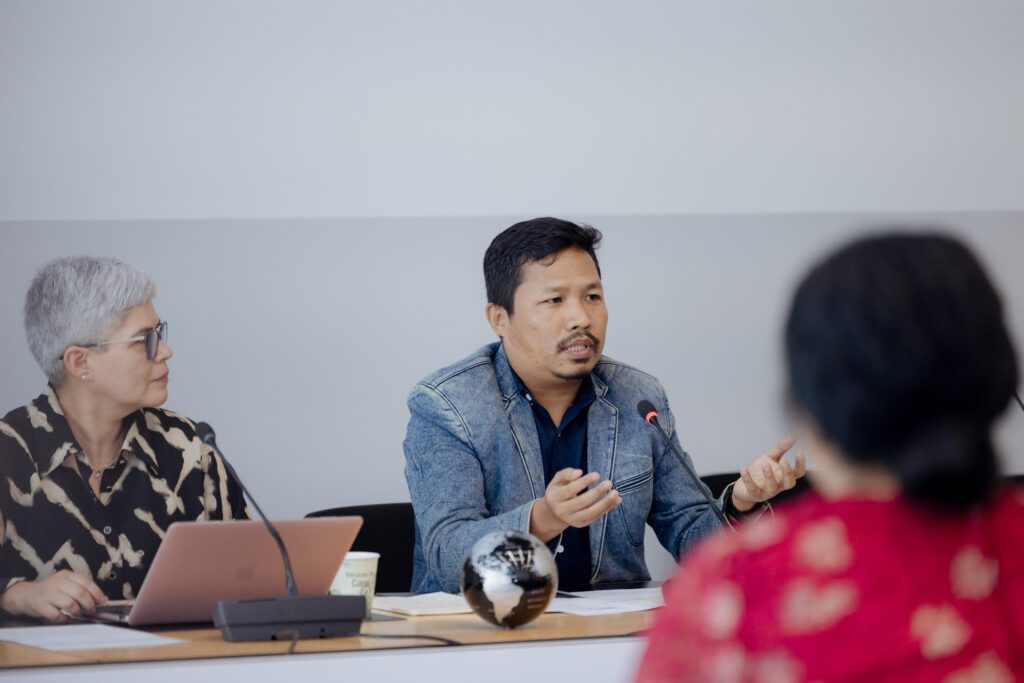
Caritas Bangladesh showcased a video recounting the story of a woman who is living in protracted displacement in Khulna, Bangladesh after cyclone Aila in 2009. Mr. Alexander Tripura from Caritas Bangladesh contextualized her story within the broader context of disaster displacement in the country.
In Bangladesh, more than 36 million people are displaced in the context of climate change and disasters and the country is largely affected by a combination of disasters such as floods, landslides, flash floods, droughts and cyclones.” – Mr. Alexander Tripura
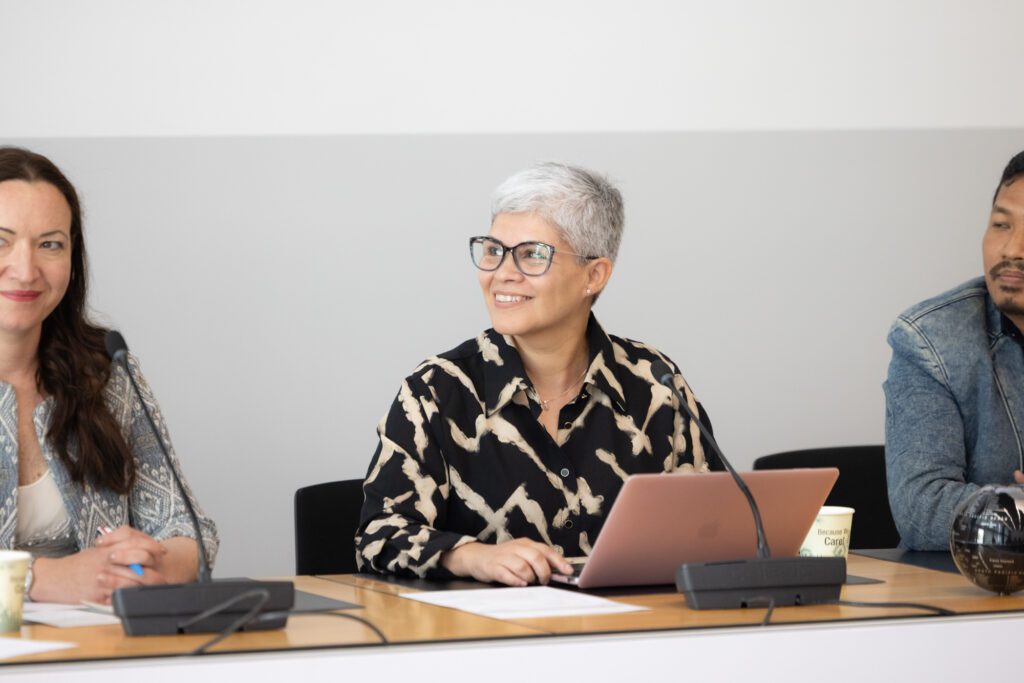
This story of disaster displacement in Asia was complemented by a story from the Americas – Ms. Catherine Mella from Caritas Chile presented on the ways in which droughts and wildfires affect vulnerable communities and which measures and participatory approaches they take to prevent disaster displacement and strengthen resilience.
Urgent climate action is essential to enable a livable future for all. We cannot continue to concentrate efforts only on emergency response. It is necessary to work with the most vulnerable population to accompany them in the knowledge of their risks and enable them to prevent and/or reduce the impacts of catastrophes.” – Ms. Catherine Mella
Ms. Christelle Cazabat presented the latest available data from IDMC on disaster displacement, building on the Global Report on Internal Displacement (GRID 2025) and Countdown to 2030: Achieving Global Targets on Disaster Displacement . She stressed the lack of availability of disaggregated data on natural hazards other than storms and floods and methodological difficulties differentiating between life-saving evacuations and cases of protracted displacement.
She also highlighted that disaster displacement affects the most vulnerable communities more severely and frequently.
Nearly 265 million displacements linked to disasters occurred in the past decade alone. Storms and floods led to 90% of the total number of disaster displacements on record. However, we have very little information for other hazards that cause disaster displacements such as earthquakes, wildfires and sea level rise.” – Ms. Christelle Cazabat
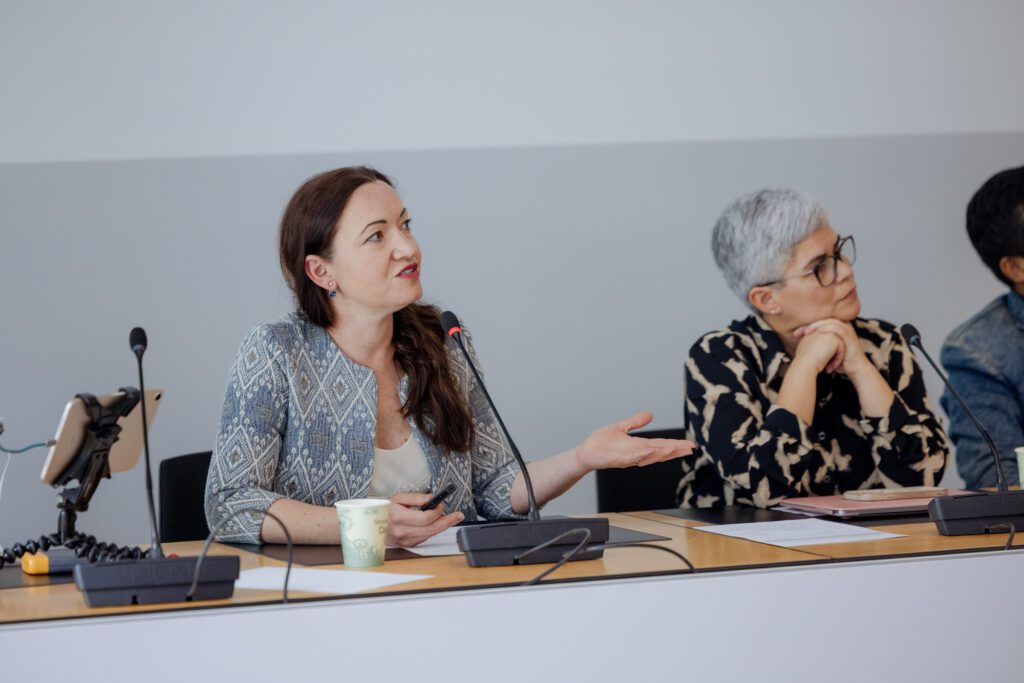
The next segment showcased creative measures taken to cope with the impact of disaster displacement, featuring a dance performance by Tongan performer and activist Ms. Makelesi Ngata who is affiliated with the Pacific Women’s Indigenous Network and a poem written and recited by Ms. Chimwemwe Sakunda from Caritas Malawi.
In her intervention, Ms. Makelesi Ngata highlighted the resilience of the Pacific communities, specifically the creative measures undertaken to cope with the volcanic eruption in the islands of Tongatapu, ‘Eua, and Ha’apai within the Tonga archipelago. Her cultural heritage performance – a traditional Tongan dance Tau’olunga – was specifically crafted for the purpose of this theme and occasion and can be considered a living archive of the memories of the volcanic eruption.
The Pacific people are not passive victims of climate catastrophe, we are knowledge-holders, artists, navigators, and warriors of ancestral wisdom, cultural arts like the Tau’olunga.” – Ms. Makelesi Ngata
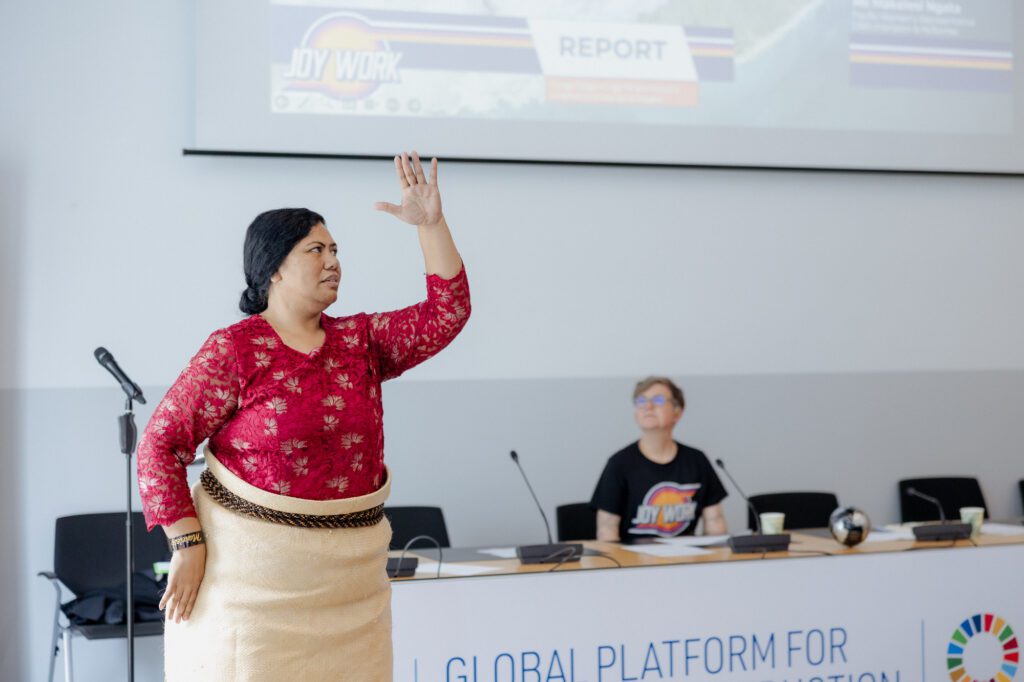
This was followed by a keynote speech by Dr. Jen Rae. In a presentation titled ‘Desperate Times | Creative Measures’, she spoke about the role of culture and the arts in causing social change and the ability of art to help imagine changes that are not visible in the present time, clarify issues that might be latent and bring into view the commons of different cultures. She profiled Arts House’s REFUGE project (2016-22) where artists, local government and emergency services rehearsed disasters with communities in Melbourne, and, also highlighted the work done under some of the initiatives at the Centre for Reworlding including Creative Resilience Lab, Joy Work, BILYA and others. The Centre for Reworlding amplifies arts and culture’s leadership capacity in climate emergency, disaster risk-reduction and resilience contexts via multi-platform art projects, innovative labs and workshops, cross-sectoral partnerships and trans-disciplinary collaborations, and research and advocacy.
Artists and other cultural producers are meaning-makers, crafters of experience. We’re provocateurs, adept at dealing with uncertainty and complexity, we are agile and responsive thinkers. We see risk, failure and critique as fuel in creative processes and most often, we are resistant to maintaining the status quo.” – Dr. Jen Rae
The third segment focused on effective practices, showcasing different actions that can be taken to avert, minimize and address disaster displacement, focusing on collaboration between different sectors and communities.
IOM Bangladesh presented a video of Cox’s Bazaar featuring how community members use art and resilience to reduce disaster risk in Bangladesh. Despite the country’s vulnerability to cyclones, floods, fires, and landslides, the refugee communities in Cox’s Bazaar actively engage in disaster preparedness through volunteer-led drills, early warning systems, and infrastructure improvements like soil stabilization and drainage maintenance. Beyond physical safety, resilience is also fostered through creative community efforts such as art and recycling initiatives, which help in strengthening solidarity. Women use jute and recycled plastic to make creative crafts to support their families and protect the environment.
When memory lingers, and words often fail us, it is through colors that we find our voice. For many in the camp, art is a heartfelt language to express the depths of their untold stories. In the face of disaster, the impacts reach far beyond the physical, touching the fabric of our emotional well-being. Through art, our community connects, shares its stories, finds resilience, and embarks on a healing journey together.” – IOM video
The Government of the Philippines showcased the frequency and intensity of natural hazards faced by the Philippines. They screened a video to highlight the urgent need for resilient and adaptive systems that can help manage the impacts of disaster displacement. The Government of the Philippines has established the ‘Predictive Analytics for Humanitarian Response’, a data-driven tool that identifies the most disaster prone and vulnerable communities. The Philippines has implemented over 6800 sub-projects through the National Community Driven Development Program which includes flood control systems, evacuation centers, slope protection works and isolation facilities, measures identified and led by local communities. Projects LAWA (Local Adaptation to Water Access) and BINHI (Breaking Insufficiency through Nutritious Harvest for the Impoverished) are joint initiatives launched by the Department of Social Welfare and Development (DSWD) that help reducing water- and food insecurity and prevent displacement.
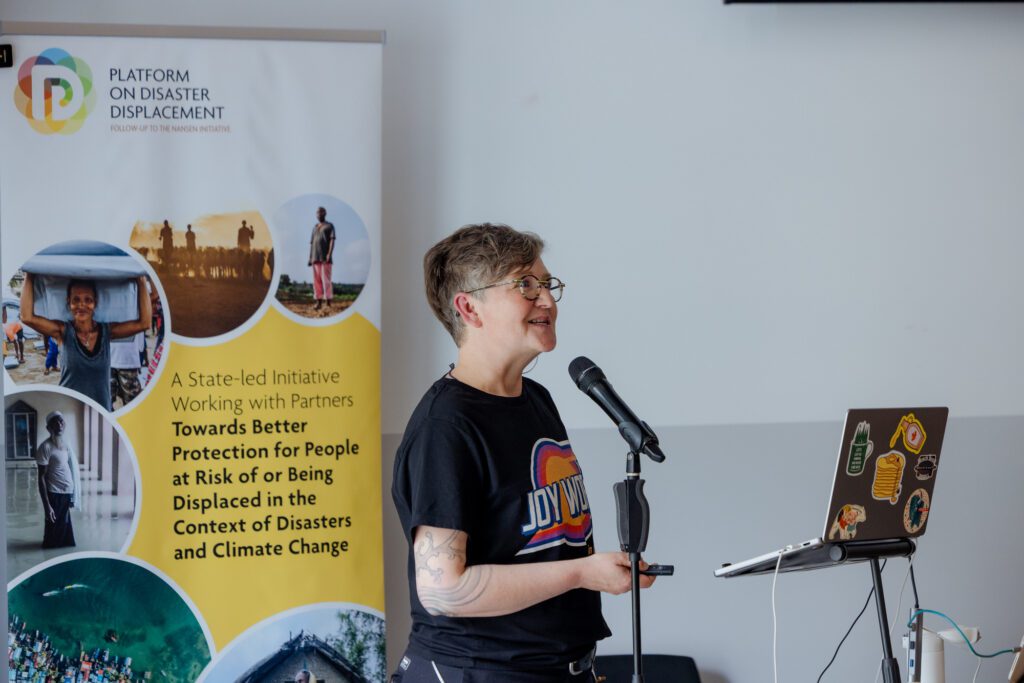
Ms. Irene Dumlao, Assistant Secretary for Disaster Response Management Group and OSEC Concerns of the DSWD explained:
The people of the Philippines live with the realities of being one of the most hazard-exposed countries. These are not abstract concepts but lived experiences. We are making a deliberate and necessary shift from reactive responses to anticipatory action. We are no longer waiting for the next wave of displacement. We are actually choosing to act decisively and sustainably.” – Ms. Irene Dumlao
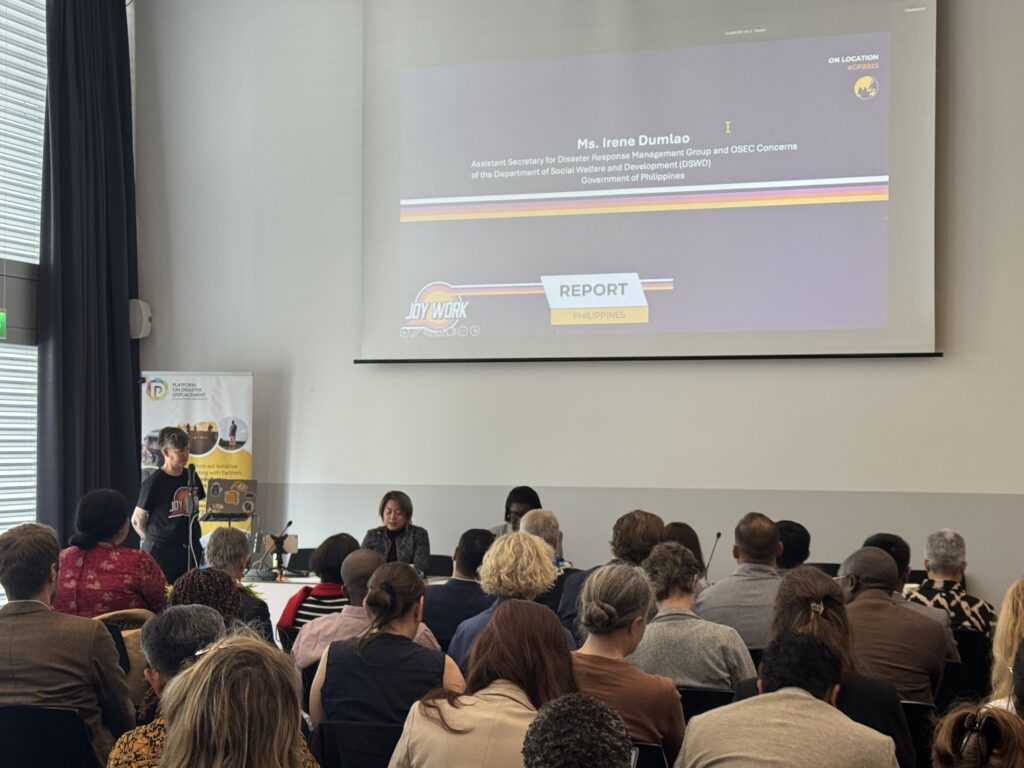
Representing the Caribbean Disaster Emergency Management Agency (CDEMA), Ms. Michelle Forbes, National Disaster Coordinator and Director of the National Emergency Management Organization of Saint Vincent and the Grenadines, highlighted CDEMA’s efforts at reducing the impact of cross-border displacement in the context of disasters such as developing regional guidelines that seek to promote protocol for cross-border evacuations across the member states.
The Caribbean region has already experienced complex cross-border displacement. In the region, preexisting national and regional instruments are not explicitly addressing the governance, protection and coordination required for the movement of people across the borders in the context of disasters. The CDEMA agreement provides a foundational legislature for collective disaster response. However, more is needed to properly address the complexity of cross-border displacement.” – Ms. Michelle Forbes
Two observers were asked to share their take-aways from the event.
Mr. Josh Knowles, illustrator and sketch artist who was drawing live on the hybrid Platform during the event presented his animated video of the main points he captured.
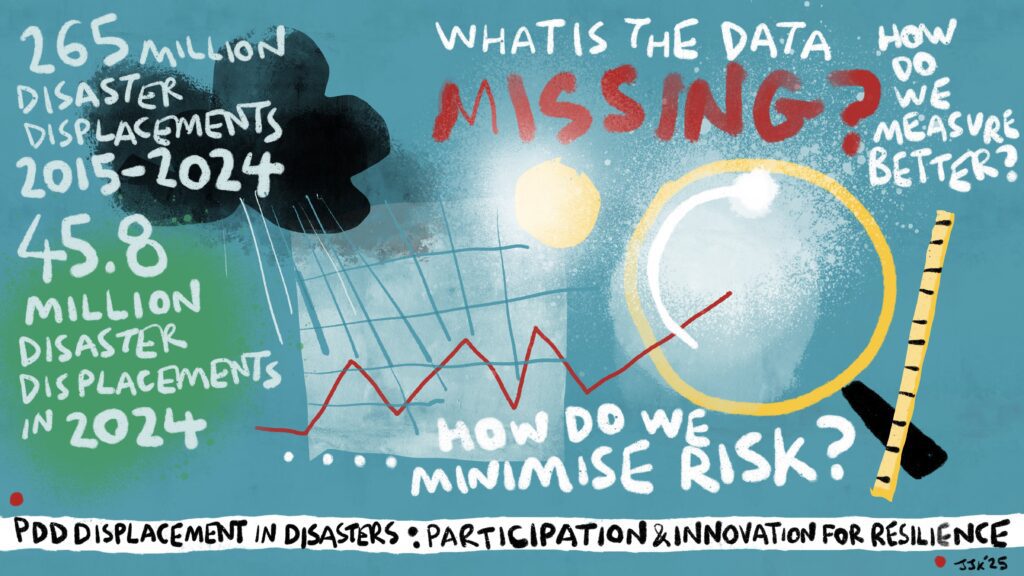
Professor Walter Kaelin, Envoy of the Chair of the PDD, shared his observations and reminded attendees of the strides made in bringing discussions on displacement within the scope of the Sendai Framework for Disaster Risk Reduction. He encouraged everyone to continue to bridge policy silos for better protection of people displaced in the context of disasters and the adverse effects of climate change.
We’ve made remarkable progress since 2015, when getting displacement mentioned in the Sendai Framework was a struggle. We now understand the issues and have good practices, but we’re working in silos – DRR, climate, migration. We have the knowledge and know what to do, but we need to break down these silos, connect our top-down international approaches with bottom-up community action, and scale up. The challenge isn’t knowing what to do; it’s connecting all the pieces.” – Professor Walter Kaelin


